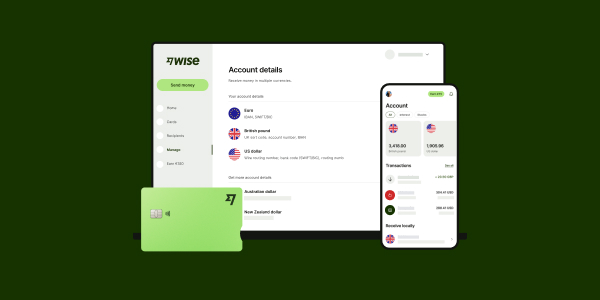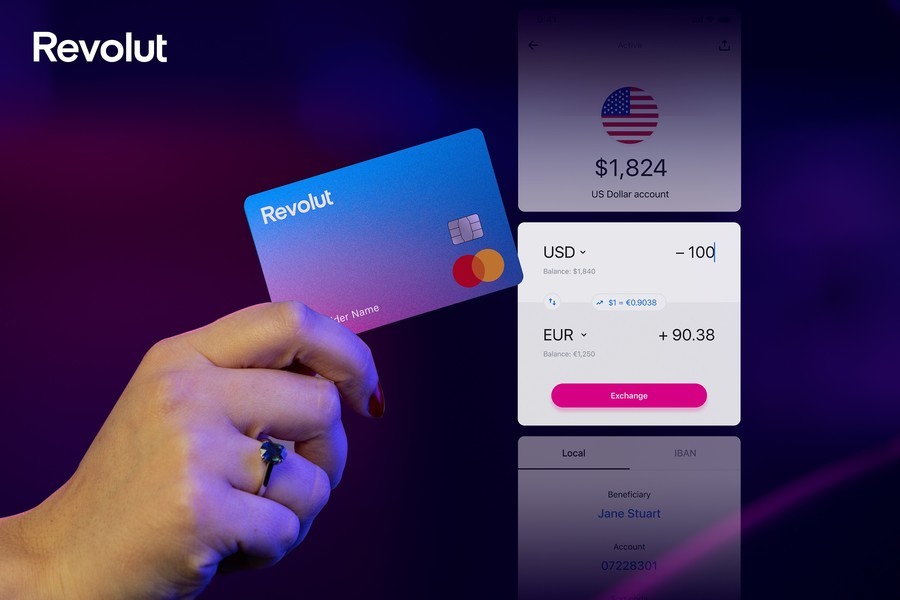Best Japanese Yen cards in the US: What are the options? 2025
A JPY card is a debit or credit card optimized for overseas use, which you can use to spend and make cash withdrawals once you’re in Japan. Japanese yen cards can be handy as they may help you cut the costs of currency conversion, or earn extra rewards when you spend in foreign currencies.
It’s also good to know that travel money cards can be handy for security, too. Cash is often required in Japan – but with a Japanese Yen card in hand you won’t need to carry all your travel money in Japanese yen when you leave. Just make cash withdrawals as and when you need to, to avoid the risks associated with carrying lots of cash around.
This guide walks through what a JPY card is, how to get one, and some of the options for US residents and citizens, like the Wise and Revolut cards.
3 best JPY cards in the US
The best JPY card in the US for your specific needs may vary based on how you like to spend, how long you’ll travel for, and the ways you prefer to manage your money. We’ve drawn up a shortlist to start your research – here’s an overview, and we’ll dive into the details about each of our preferred cards right after.
| Wise | Revolut | Capital One |
|---|---|---|
|
|
|
Wise Multi-Currency Card
You can open your Wise account online or in-app, to hold and exchange 40+ currencies, and order your Wise Multi-Currency Card in a few taps.
You’ll pay a low one time fee to get your card, and spend any currency you hold enough balance in for free. Whenever you convert currencies, you’ll get the mid-market rate and low, transparent fees.
Wise won’t charge a fee for the first two ATM withdrawals each month if the total combined withdrawal amount does not exceed $100. After $100 is withdrawn in a month, any amount in excess will be charged a 2% fee. After your first 2 withdrawals, there’s a $1.50 charge per withdrawal. (The ATM operator may charge their own fees)
Need more? Wise accounts also offer local account details for a selection of currencies, and easy ways to send fast or instant payments to 160+ countries with Wise money transfer.
| Wise Multi-Currency Card pros | Wise Multi-Currency Card cons |
|---|---|
| ✅Hold and exchange 40+ currencies and spend in 150+ countries ✅ Currency conversion with the mid-market rate, and low fees from 0.43%, ✅ Convert to Japanese yen in advance or let the card automatically switch as and when required ✅ Manage your card from your phone ✅ No monthly fees or minimum balance | ❌ One time card order fee applies ❌ Some transaction fees apply, including ATM fees after no Wise fee limits ❌ No cash top up options
|
Revolut card
Standard Revolut accounts have no monthly fees – but do have a few transaction fees, as well as lower no fee transaction allowances compared to higher tier accounts. If you want full account features, you can upgrade for a monthly fee of up to 16.99 USD. All accounts come with the option to hold and exchange JPY, and linked physical and virtual cards for easy spending.
Depending on the account you hold you can get some no fee currency conversion during market hours (Monday to Friday), with fair usage fees of 0.5% after that. There’s also an out of hours conversion fee of 1% which you’ll want to watch out for.
| Revolut card pros | Revolut card cons |
|---|---|
| ✅ Choose the account plan that suits your needs ✅ Spend in 150+ countries ✅ All accounts have some no fee weekday currency conversion ✅ Higher account tiers have travel extras like insurance and lounge access as part of the package ✅ Physical and virtual card options | ❌ Fees apply to access all account features ❌ Fair usage fees may apply if you exhaust your monthly currency conversion or ATM allowance ❌ Out of hours fees of 1% apply when converting currencies at the weekend |
Capital One Venture Rewards card
Capital One has a Venture Rewards card which is aimed at frequent travelers and which has no foreign transaction fees when you spend overseas. You can get instant access to lots of travel perks like TSA PreCheck credit, travel accident insurance, and 24/7 support if your card is lost or stolen while you’re abroad.
Bear in mind that there’s also a cash advance fee when you use an ATM, at 3 USD or 3% whichever is higher, and as with all credit cards, you’ll need to repay your bill in full every month to avoid fees and interest.
| Capital One card pros | Capital One card cons |
|---|---|
| ✅No foreign transaction fee ✅ Earn travel rewards on spending ✅ Fairly low cash advance fee ✅ Spend rewards on Amazon or PayPal among other options ✅ Extras like lounge access, TSA PreCheck credit, and free travel insurance | ❌ Variable interest rates including higher rates for cash advances ❌ 95 USD annual fee ❌ 3 USD or 3% cash advance fee – whichever is higher |
What is a Japanese Yen card?
We’ve featured both debit and credit cards you can use for convenient and cost effective spending in Japan in this guide – the way they work is a little different, but both can be helpful depending on your specific preferences.
Japanese yen debit cards may also be called multi-currency cards and are usually linked to a multi currency account you’ll need to top up before spending. These cards are usually pretty low cost, often with no ongoing fees, and lots of travel friendly perks like favorable exchange rates and no-fee ATM withdrawals.
Credit cards for international use will convert your JPY spending back to USD to create your monthly bill – often with no foreign transaction fee added. Credit cards can also be handy if you want to earn points and rewards, or spread the costs of your trip to Japan over a few months.
We’ll look at a few specific cards to consider in a moment.
If you’d like to consider other card options, this guide may help: Best travel cards for Japan
Pros and cons of using a Japanese Yen card
So, is a Japanese yen card worth it? Here are a few pros and cons to think about.
| JPY card pros | JPY card cons |
|---|---|
| ✅Some cards offer better exchange rates compared to banks – or no foreign transaction fee ✅Make ATM withdrawals in Japan when you need cash ✅ Accounts and cards available with no ongoing fees to pay ✅ Cards issued on global networks – look out for ATMs marked as international when you’re in Japan ✅ Secure way to spend overseas, not linked to your checking account | ❌ You’ll need to register an account, get verified and wait for your card to arrive ❌ Some cards have annual or ongoing fees ❌ Transaction fees of some type apply to all cards – these may be conversion costs, cash advance fees, or ATM charges for example |
Costs of getting a JPY card in the US
Each provider will have their own fees which can vary pretty widely to the charges you might find with a debit card from a US bank checking account. You might find fees to top up, for example, and different charges for spending and withdrawing in different currencies. Here’s an overview.
Japanese Yen card fees
Here are the key costs of the cards we selected – other fees may also apply so do check the account terms and conditions carefully before you start to spend.
| Provider/Service | Wise | Revolut | Capital One |
|---|---|---|---|
| Get a card | 9 USD | No extra fee (monthly account fees may apply) | No fee |
| Add money | Free top up options are available to add money in USD from your bank, or in a selection of other currencies | No fee from debit cards and bank accounts in the US (fees may apply for some other top up methods) | Not applicable |
| Account maintenance fee | None | 0 USD – 16.99 USD/month depending on tier | 95 USD annual fee |
| Spend in Japanese yen | Free to spend currency you hold enough balance in Convert currencies from 0.43% | No fee to spend currency you hold Some no fee currency exchange to plan limits, 0.5% fair usage fee after that | No foreign transaction fee – network rates will apply |
| ATM withdrawal | First 2 withdrawals up to a combined total of $100/month for no fee*. After that $1.50 + 2% fees apply per withdrawal (once you’ve withdrawn $100 in a given month, any amount in excess will be charged a 2% fee) | No fee for in network withdrawals Standard accounts: 400 USD/month out of network withdrawals free, 2% after that | 3 USD or 3%, whichever is greater + interest |
*ATM operators may charge their own fees. Fee amount varies by ATM operator.
JPY card exchange rates
Different providers have their own approaches to calculating the exchange rate used to convert USD to JPY.
- Wise offers the mid-market rate and splits out any costs of conversion, which start from 0.43%.
- Revolut accounts have some weekday currency conversion using the mid-market rate, but limits may apply depending on the account type you pick. If you exceed a limit, fair usage fees of 0.5% apply.
- Capital One uses the network exchange rate to convert back to USD to create your monthly bill. This is usually pretty fair, and there’s no extra foreign transaction fee to pay either.
Where can I use a JPY card?
Use a JPY card to spend and make cash withdrawals in Japan.
One thing worth noting is that not all ATMs in Japan can accept foreign cards. You’ll need to keep an eye out for a terminal marked as international – these can be found in some major banks, post offices and 7-Eleven stores for example.
Bear in mind also that cash is still a very popular payment option in Japan. If you find a merchant can’t accept your card you may need to visit a nearby ATM to get some cash in Japanese yen for the transaction.
JPY card in the US
You’ll be able to use any of the cards we’ve looked at above in the US as well as in Japan. If the balance in your account is in JPY or another foreign currency, you may pay a fee to convert back to USD for local spending.
What is a JPY card good for?
A JPY card can help cut costs when you spend in Japanese yen, and can also be more secure than using your bank card.
While cards are accepted in many large cities and tourist areas in Japan, they’re not always an option as cash is still a popular payment method. With a JPY card you won’t need to carry a lot of cash as you can just make ATM withdrawals to top up your supplies, often with low or no fees.
You can also use your account to buy Yen online. Plus, your Japanese yen card can help you cut the costs of currency conversion by offering a better exchange rate compared to your bank. Some cards like the Wise and Revolut cards allow you to either convert your USD to JPY before you leave, or at the point of payment. This gives flexibility. Spot a good rate and you can convert in advance – or just let the card do it for you if you’d prefer.
How to get a Japanese Yen card in the US
Different banks and providers have their own card order processes – so you’ll need to check out the card order process for the provider you prefer, so you can prepare everything that’s needed. However, it’s commonly possible to get your card ordered online or with your phone – so you shouldn’t even need to leave home.
You’ll usually have to register a provider account if you want a debit card, and then provide an image of a suitable form of ID like a passport or driving license. You might be asked to provide your proof of address as well. Once you’ve ordered your card it’ll arrive in the mail shortly after.
If you’d prefer a credit card you can still often order online but it may take a little longer as eligibility checks will need to take place. You may also need to provide proof of income or other documents to support your application.
What are the requirements to get a JPY card?
Digital debit card providers like Wise and Revolut let you apply for your JPY card online or through an app. There’s no credit check – all you need to do is to register your account and upload your proof of ID and address for verification. Your card will then be dispatched by mail.
If you prefer a credit card for your JPY spending there may be some other eligibility requirements and you may need to have a credit score above a minimum threshold. Check with the specific provider you prefer to understand the full detail.
More information: How to get a Wise Multi-Currency Card
Conclusion
If you spend in Japanese yen online or if you’re planning a trip to Japan soon, a JPY card can be a great way to spend less. Choose either a JPY debit card or an international travel credit card, and you could get perks like great exchange rates, some no fee ATM withdrawals, travel benefits and rewards. The exact way each card works is different – and so are their fees. Use this guide to start your research and see which Japanese yen card might be the best fit for your unique needs.
FAQs
What are the benefits of using a JPY card?
A JPY card can help you get a better exchange rate and lower overall fees when you spend in Japanese yen. You may also find cards which have no-fee ATM withdrawals abroad, or which let you earn rewards for foreign currency spending. Use this guide to decide which might work best for you.
Are JPY cards available in the US?
Yes. In the US you might decide on a Japanese yen debit card or an international travel credit card. Both card types have their own features, which may include holding a JPY balance, mid-market exchange rates, no-fee ATM withdrawals, and travel benefits like free insurance.
How much does a JPY card cost?
JPY debit cards often have low or no initial fees, but transaction costs apply when you use your card, which can include fees for topping up, ATM withdrawal charges and inactivity or closure fees. International credit cards for JPY spending are likely to have an annual fee, interest, cash advance costs and penalties if you don’t pay your bill on time.



